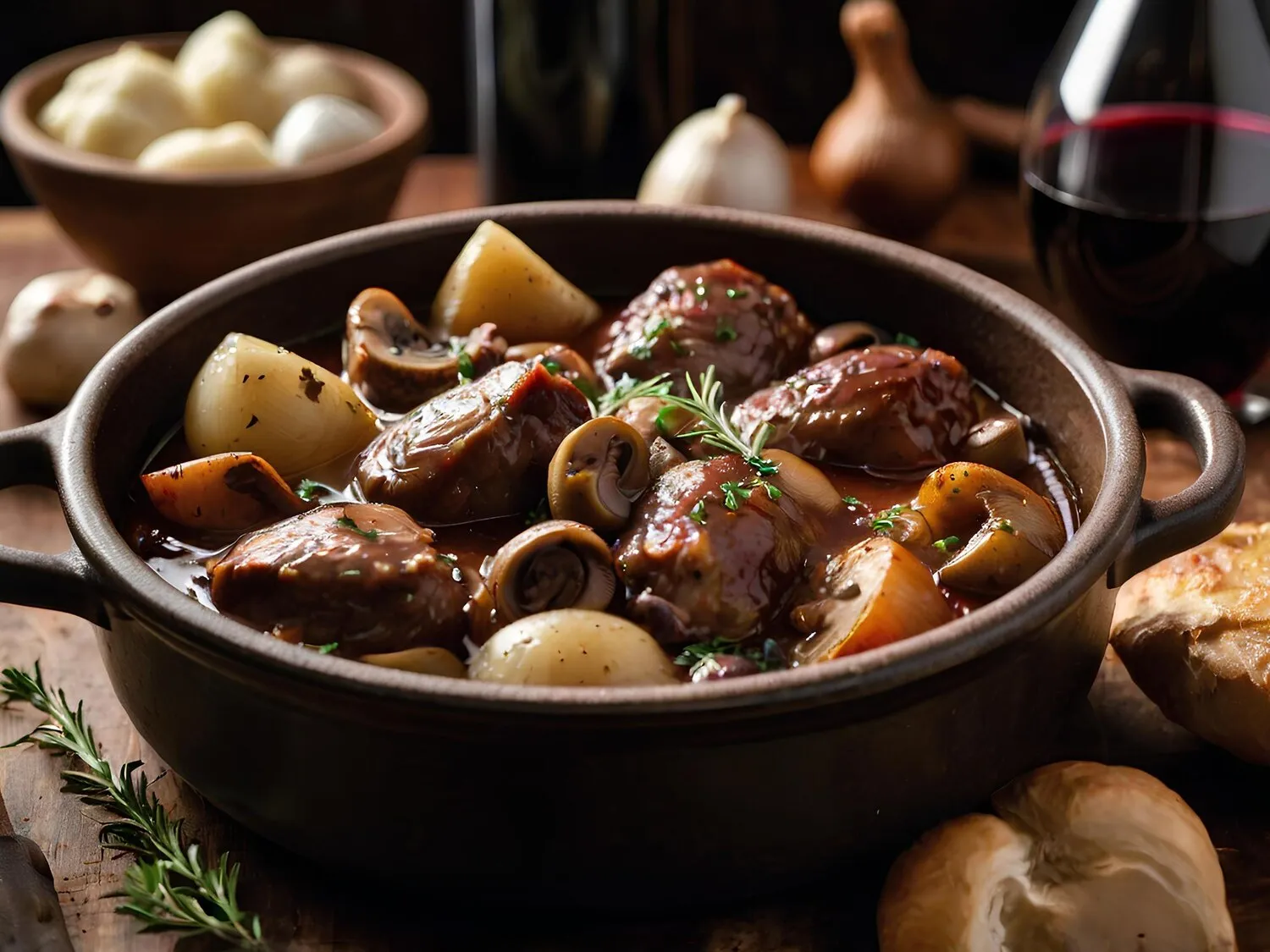
Tête de veau sauce ravigote
A classic French dish featuring calf's head served with a tangy ravigote sauce.
Nutrition Facts
* The % Daily Value (DV) tells you how much a nutrient in a serving of food contributes to a daily diet. 2,000 calories a day is used for general nutrition advice.
Tête de veau, or calf's head, has been consumed in France since the Middle Ages, reflecting a nose-to-tail eating philosophy born from both economic necessity and a desire to utilize all parts of the animal. The ravigote sauce, a cold vinaigrette-based sauce, likely evolved from earlier French sauces, incorporating fresh herbs and potentially influenced by regional variations.
Tête de veau sauce ravigote represents a classic example of traditional French cuisine, showcasing resourceful cooking and a respect for ingredients. Its presence on restaurant menus, particularly in bistros and brasseries, signifies a connection to culinary heritage.
Nose-to-Tail Eating
The dish exemplifies the 'nose-to-tail' philosophy, using less common cuts of meat and minimizing waste. This reflects a historical practicality and a modern appreciation for sustainable eating.
Bistro Culture
Tête de veau is often found on the menus of traditional French bistros, representing a connection to classic French culinary traditions and providing a familiar taste of the past.
Regional Variations
While the core components remain consistent, regional variations exist in the preparation of both the calf's head and the ravigote sauce, reflecting local ingredients and culinary preferences. Some variations may include adding mustard to the sauce, or different herbs.
The dish presents a contrast between the rich, savory flavor of the calf's head and the bright, tangy ravigote sauce. The textures are also diverse, with the gelatinous and tender meat counterpointed by the crunchy vegetables and herbs in the sauce.
The calf's head, meticulously cleaned and boiled, offers a subtle beefy flavor, with distinct textures coming from different parts of the head. The ravigote sauce typically features a base of white wine vinegar or lemon juice, olive oil, and a medley of fresh herbs like parsley, chives, tarragon, and sometimes capers, cornichons, and shallots. This creates a vibrant, acidic, and herbaceous counterpoint to the richness of the calf's head.
Cleaning is Key
Thorough cleaning of the calf's head is crucial to remove any impurities and ensure a clean flavor. Multiple blanching and rinsing steps are often necessary.
Gentle Cooking
Cook the calf's head slowly and gently to achieve a tender texture without it becoming rubbery. Simmering in a flavorful broth enhances the overall taste.
Freshness of Herbs
The quality of the ravigote sauce depends heavily on the freshness of the herbs. Use high-quality, freshly chopped herbs for the best flavor.
Adjust the Acidity
Taste and adjust the acidity of the ravigote sauce to your preference. A balance between the vinegar and oil is essential.
Explore additional Traditional French dishes and restaurants
Explore Traditional FrenchDiscover top dining spots and culinary experiences in Nancy.
Explore NancyLearn more about the food culture, restaurant scene, and culinary heritage of France.
Explore France